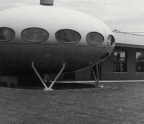The Bay View Tragedy

Historical Paper, Junior Division, National History Day
Each year, more than 16,000 students across Wisconsin present National History Day (NHD) projects to their classmates, teachers, and judges. NHD is a terrific combination of scholarship, hard work, imaginative problem solving, and fun. Anna Pearce, a eighth grader from Richfield Middle School, entered her paper in the Milwaukee North regional contest and advanced to the Wisconsin state contest, where she competed among 615 Wisconsin students to win the Junior Division historical paper category. In June, she represented Wisconsin at the national NHD contest at the University of Maryland–College Park where she won the American Labor History Award. This is her winning entry.
On May 5, 1886, Wisconsin state militia fired on protesters marching in support of the eight-hour workday in Bay View, Wisconsin, ultimately leading to the death of seven people. This event shed light on the inhumane treatment of workers and led to the election of public officials in Wisconsin who were supporters of the eight-hour workday. The Bay View Tragedy, also known as the Bay View Massacre, was Wisconsin’s bloodiest labor event. More than 1,500 people marched with the goal of improving working conditions. However, instead of coming to the peaceful conclusion they were hoping for, they were shot at and seven people, were killed.1 This tragic event in Wisconsin history ultimately led to the workers’ triumph over adversity, resulting in fair hours, higher wages, and better working conditions.

A Cause to Unite
In the 1880s, immigrants who left their homes in hope of better lives arrived in America only to find poor working conditions They did all this work for approximately one dollar per day, the equivalent of approximately two dollars per hour today. Skilled workers’ wages were five dollars a day, which equates to about seven dollars per hour today.
You’re reading a preview, subscribe to read more.
Start your free 30 days



